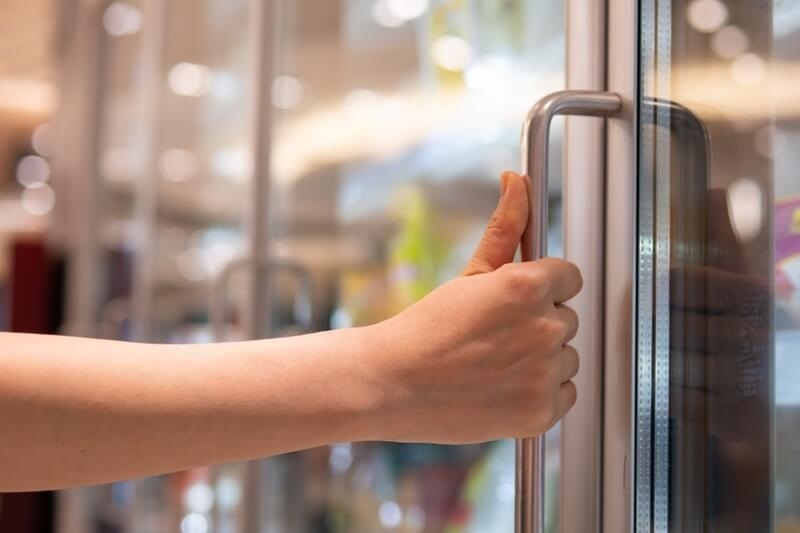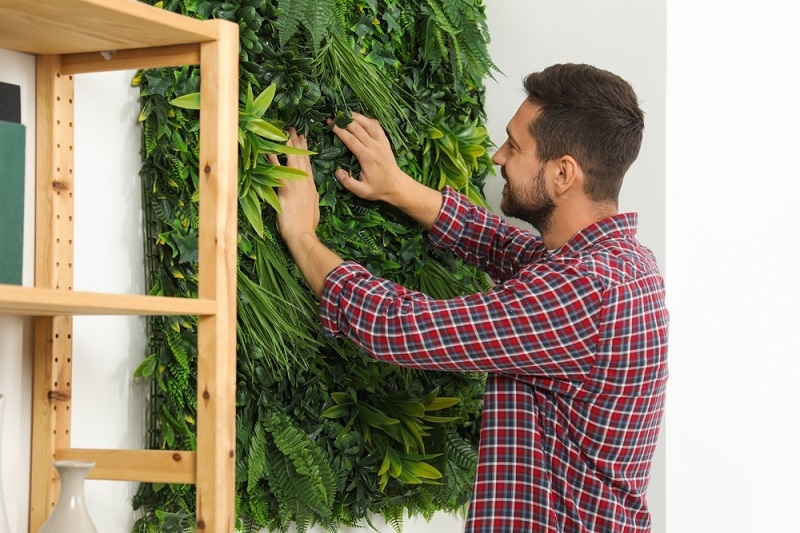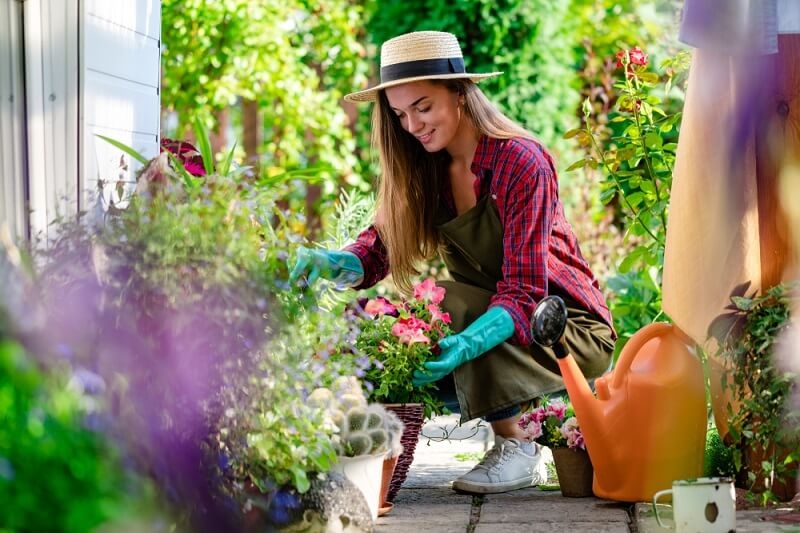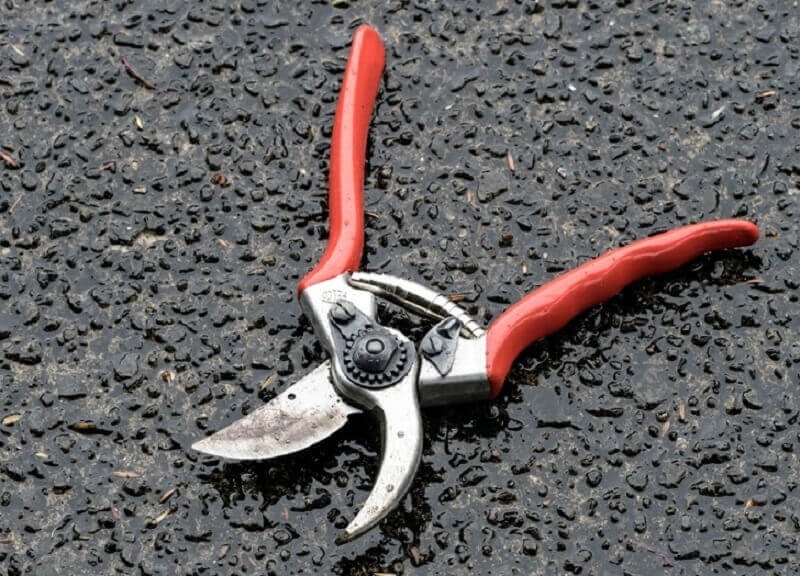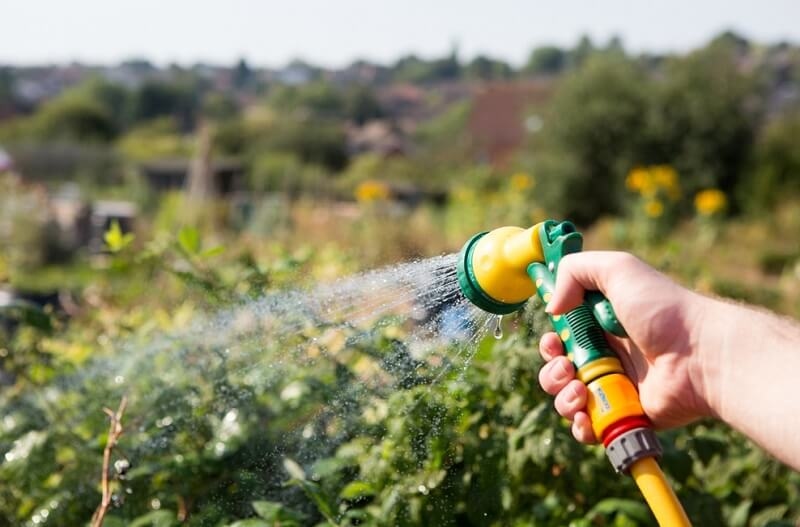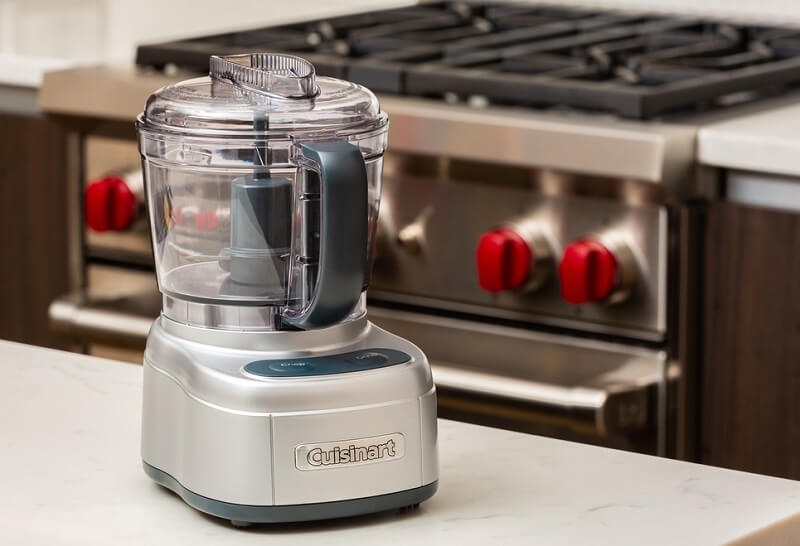How to Pick Artificial Plants for Outdoors That Look Real

Greenery has a way of lifting any space. A balcony looks more welcoming, a patio feels finished, and even a small corner comes alive when you add plants. The problem? Outdoor conditions don’t always cooperate. Sunlight burns delicate leaves, rain drowns pots, pests take over, and busy schedules make upkeep impossible. That’s where artificial plants for the outdoors come in.
The newer ones don’t scream “fake.” They’re designed with texture, color gradients, and details that pass for the real thing. And if you go for UV resistant plants or weatherproof faux plants, you’ll have outdoor greenery that doesn’t just look natural but also holds up season after season.
This guide cuts through the noise and shows you what to look for, what to avoid, and how to style outdoor artificial plants so they don’t just sit there, they actually transform your space.
Why Artificial Plants Outdoors Are Worth It
Natural plants outdoors are beautiful, but they can be a chore. Artificial ones give you the same visual payoff without the constant care.
- No maintenance drama: No watering, no pests, no trimming.
- Year-round greenery: Summer heat, winter frost, they stay the same.
- Money well spent: A one-time purchase lasts years, unlike live plants that keep dying on you.
- Creative freedom: Place them anywhere, whether it’s full sun, deep shade, or poolside.
You don’t just save time, you also save the frustration of trying (and failing) to keep outdoor plants alive.
Must Read: Transform Your Garden with These 11 Money-Saving Hacks
What Makes Outdoor Artificial Plants Look Convincing
If you want plants that actually pass as real, here’s what matters:
- Material: Go for polyethylene, polyurethane, or outdoor-rated silk. Skip the shiny plastic.
- UV Protection: Direct sunlight ruins untreated faux greenery. UV resistant plants won’t fade into dull, brittle messes.
- Weatherproofing: Weatherproof faux plants are designed to take rain, wind, and temperature swings.
- Design details: A flat green leaf looks fake. Realistic plants mix shades, have varied leaf sizes, and even slight imperfections.
- Styling tricks: A realistic planter, a layer of mulch or stones, and blending with real plants make them impossible to call out as faux.
Best Types of Artificial Plants for Outdoors
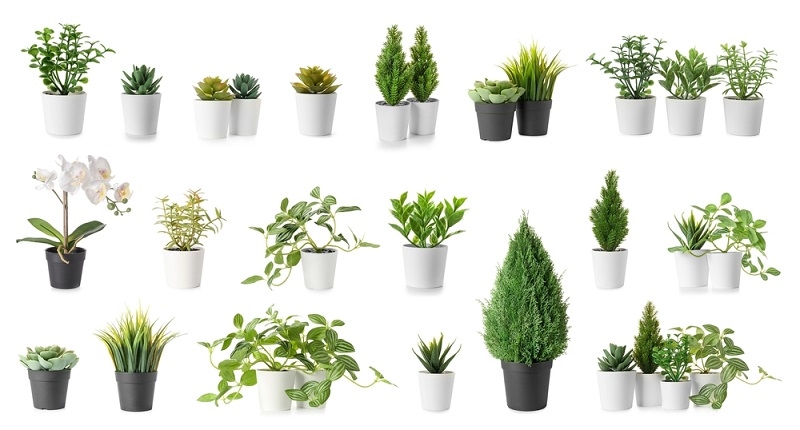
Different spaces call for different types. Here are reliable options that always look good outdoors:
- Trees: Palms, ficus, or tall topiaries for patios, poolsides, or entryways.
- Hedges: Faux boxwood panels and privacy screens for fences or balconies.
- Hanging plants and vines: Ivy, ferns, or bougainvillea for pergolas and railings.
- Bushes and shrubs: Great for corners, walkways, and doorways.
- Artificial flowers: UV-treated geraniums, hydrangeas, or petunias for a burst of color.
- Succulents and cacti: Modern, structural, and virtually indestructible.
The key is matching the plant style with the mood of your space, structured hedges look polished, while tropical palms feel relaxed and bold.
How to Choose Outdoor Artificial Plants
When you’re shopping, think practical first.
- Outdoor rating: Only buy ones labeled for outdoor use.
- Scale: A single mini bush on a large patio looks lost. Match plant size to space.
- Placement: Sunny? Go UV resistant. Windy? Use heavy pots. Covered? You can sneak in some indoor-rated options.
- Budget vs. lifespan: The cheap ones fade fast. Quality weatherproof faux plants pay off long term.
- Cleaning: Bigger leaves are easier to wipe down than detailed vines.
How to Make Faux Plants Look Natural Outdoors
Styling makes all the difference. Even expensive plants can look fake if you just plop them down.
- Use real pots—terracotta, stone, or ceramic.
- Cover bases with soil, mulch, or pebbles.
- Mix in some real plants for balance.
- Layer different heights—tall trees, mid shrubs, smaller accents.
- Place them where they’d naturally grow: vines trailing, ferns in shade, palms in open corners.
Done right, no one will question them.
Where Outdoor Artificial Plants Work Best
- Patios and decks: Potted palms or hanging vines for atmosphere.
- Balconies: Rail planters and trailing greenery for compact spaces.
- Poolsides: UV resistant tropicals that won’t shed leaves.
- Entrances: Statement topiaries by the front door.
- Fences and walls: Green panels or ivy screens for privacy.
- Restaurants and cafes: Low-care greenery that always looks inviting.
Another overlooked space? Driveways and walkways. Lining them with boxwood shrubs or small potted trees creates symmetry and a sense of order. For commercial spaces, artificial hedges double as both decoration and branding, they frame entrances neatly and hold up under heavy foot traffic.
Also check: Why Goodyear Garden Hoses Are a Gardener's Best Friend
Caring for Outdoor Artificial Plants
They’re low maintenance, not no maintenance. A little effort keeps them looking fresh:
- Rinse or wipe down regularly.
- Wash with mild soap a few times a year.
- Bring them in during extreme storms.
- Reapply UV spray once a year if needed.
Handled right, outdoor artificial plants will stay in good shape for 5 years or more.
Styling Beyond the Basics
If you want your space to really stand out, think beyond just placing a few pots. Group plants in threes for a natural, layered effect. Use taller plants to frame seating areas, while trailing vines soften hard edges like concrete or railings. Artificial flowers work best as accents—don’t overdo it. A single bold splash of color against mostly green foliage feels intentional and elegant.
Lighting also plays a role. Spotlights aimed at tall faux palms or hedges in the evening create dramatic shadows and highlight textures, making your greenery look even more real. Pair that with sturdy planters that match your outdoor aesthetic, and your setup goes from “decorative” to “designed.”
Mistakes People Make
- Using indoor-only faux plants outside.
- Picking the wrong size for the space.
- Overcrowding with too many plants.
- Sticking them in cheap-looking planters.
Explore More: Creating an Outdoor Garden: A Beginner's Guide For You
Final Word
If you want a vibrant outdoor space without babysitting plants, artificial plants for outdoors are the way to go. They stay green, don’t demand your weekends, and can outlast seasons of harsh weather.
Choose outdoor artificial plants that are UV resistant, weatherproof, and designed with detail. Style them smartly, and they’ll give you the atmosphere of a thriving garden, without ever needing a watering can.
FAQs
How long do they last outdoors?
High-quality UV-resistant plants can last 3–7 years depending on climate.
Can they handle rain?
Yes, as long as they’re weatherproof faux plants designed for outdoor use.
Do they fade?
Not if you stick to UV-resistant options.
Can I mix real and artificial?
Yes, it’s the easiest way to fool the eye.
This content was created by AI

